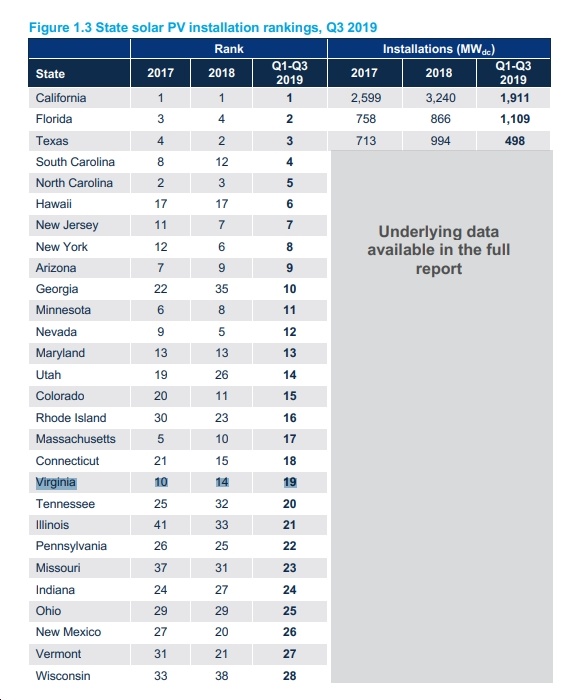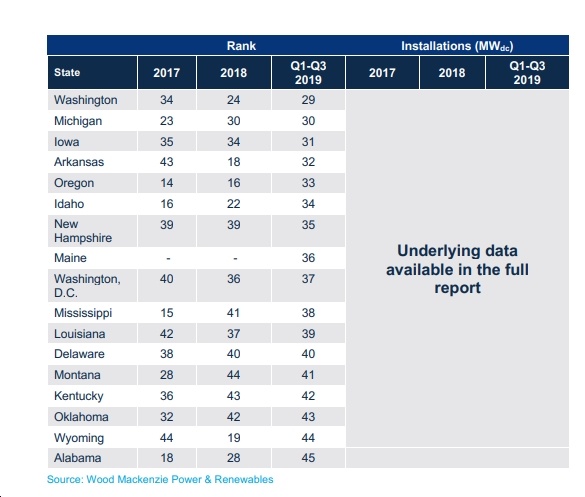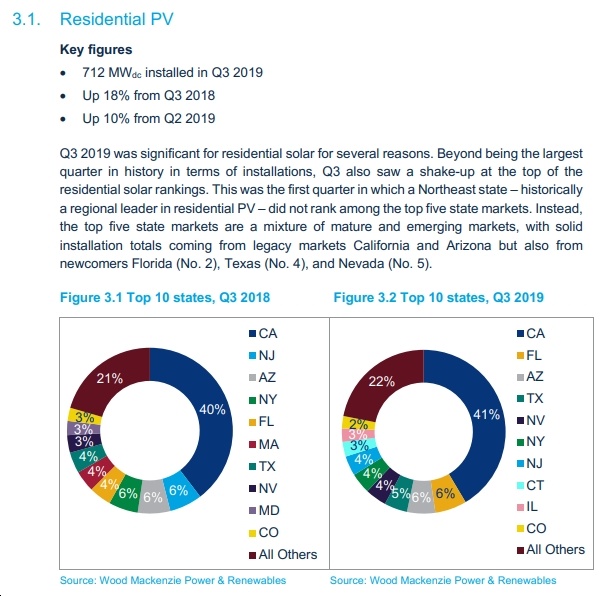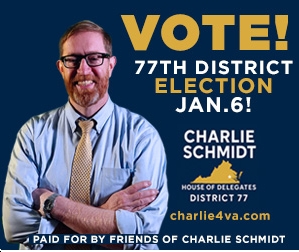Without looking at the following tables and graphics, which state do you think actually did *worse* – in terms of its solar PV installation ranking – in 2018 vs. 2017 and in Q1-Q3 2019 vs. 2018? Yep, that would be our own state of Virginia, where – according to a new report by Wood Mackenzie – we’re going in the wrong direction, even as “US solar market sees best quarter ever for residential installations.”
Thus, according to Wood Mackenzie, Virginia’s 2018 State solar PV installation ranking fell from #10 in 2017 to #14 in 2018 to #19 in the first three quarters of 2019. Great, eh? Also, note how Virginia ranks well behind North Carolina…and Georgia…and New Jersey…and New York…and Maryland…and Minnesota…and Rhode Island…and Utah…and Massachusetts…and Connecticut, etc? Note how many of those states are actually to the *north* of Virginia? So…nope, you can’t blame geography or climate or whatever. Instead, it’s all about government policy – good policy (in the cases of many of the states that rank higher than Virginia) and bad policy (in the case of Virginia and many of the states that rank even lower). Of course, the main reasons Virginia has such piss-poor policy to promote a rapid transition to clean energy are obvious:
- The corrupting, deleterious influence and power of Dominion Energy on our political system has held us back in many ways, including the transition to clean energy, including distributed (e.g., not under Dominion’s control) solar power.
- Fossil-fuel-industry-shill Republicans having been in charge of the Virginia General Assembly for years.
Fortunately, Democrats will soon be in charge, and they hopefully will change this situation. Which policies should Democrats adopt? Here’s a short list, from the Virginia environmental groups’ policy agenda released this past Saturday, which if enacted into law could really turn things around – fast!
- “Require utility investments in clean energy, including an enforceable near-term percentage target, such as a 50% clean energy standard by 2030.”
- “Incentivize solar developers to use previously developed or degraded land, such as post- mining land, by offering tax credits.”
- “Break down barriers to distributed solar so that it can become a viable option in Virginia.”
- “Support distributed solar through incentives such as tax credits, rebates, or low-interest loans.”
- “Remove barriers that limit customers’ access to distributed solar, including lifting the 1% cap on net metering for customers in investor-owned utility territories, affirming the legality of third-party power purchase agreements for all customers, and allowing local governments to use electricity from a solar project on one property to serve buildings on nearby properties.”
- “Implement specific programs to expand access to distributed energy for low- and moderate-income customers.”
- “Reject any changes to the net metering compensation structure, unless those changes, at a minimum: Grandfather all existing net-metering customers; Mandate that any changes to net metering do not take effect for at least five years; and, Ensure the economic incentives are as good as or better for customers than the current net metering system.”
Come the end of the 2020 Virginia General Assembly session, we’ll know how successful it’s been by looking back at lists like this one and seeing how much of it got done.

















